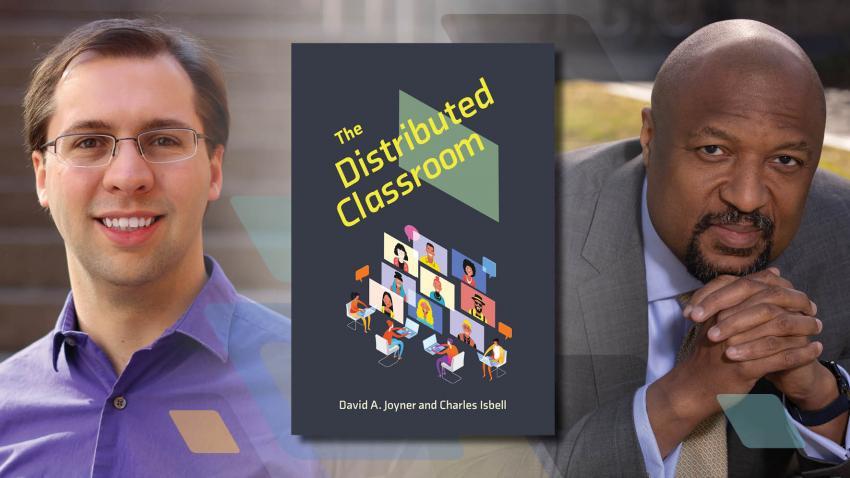
New Book on Future of Online Education Draws on Faculty OMSCS Experience
Charles Isbell and David Joyner have written a book on the power and potential of online education. The Distributed Classroom, which published on Sept. 14, presents a hybrid education model where faculty and students can thrive in an increasingly virtual world.
“As educators, we have found ourselves in a new world,” said Isbell, who is dean of the College of Computing and the John P. Imlay Jr. Chair. “Even those of us who have thought hard about a future with a more online, more asynchronous, and more distributed set of students are dealing with this reality faster than we expected, and scrambling to keep up.”
Isbell and Joyner, who is executive director of online education, are more than qualified to offer a solution as both are instructors (and Isbell a founder) for Georgia Tech’s Online Master of Science in Computer Science (OMSCS), an online only MS degree program that was launched in 2014.
“What is so revolutionary about OMSCS is when you take away all these structural obstacles—Atlanta, tuition, pace of a regular degree—you make it more accessible, allow more students in, and reduce cost," Joyner said. "It’s a snowball effect, but the question is can you do this built from what you’re doing already?”
Joyner first expressed the pair’s ideas in an editorial for The Atlanta Journal-Constitution in 2020 on the possibilities of hybrid education. “But as we adjust to the widespread impacts of the pandemic, there is a better question we should be asking: why would we go back to normal?” he wrote. “Was what we were doing before the best we could do, or can this moment be the catalyst for something better?”
The book answers that question by proposing that hybrid on its own isn’t the answer, but a deliberately designed distributed model may be. Isbell and Joyner suggest that educators find ways to share more of what is already happening in-person with a remote audience. Having qualified teaching assistants to support a dedicated online student experience is also key to the success of a distributed classroom.
This model allows classes to admit more students and in-person teaching organically enables content to be refreshed. It also creates flexibility for everyday issues such as instructor illness, conference travel, or students taking the class asynchronously in other areas.
“It's a great model for how to take a class and distribute it to more students, make participation more flexible, and protect against the pandemic or other interruptions — all without doing a lot of additional work,” Joyner said. “We think this is where we are going in 20 years anyway, but the pandemic has given us an opportunity to experiment with this a lot faster.”
Joyner sees the audience for their book as administrators, instructors, students, and instructional designers—essentially anyone interested in a distributed classroom experience.
“There are tools that can help, and there are skills we can all learn,” Isbell said. “More importantly, there is a mindset that we can develop that will help us to not only deal with this new reality, but to provide a better experience and a better education for more learners.”


